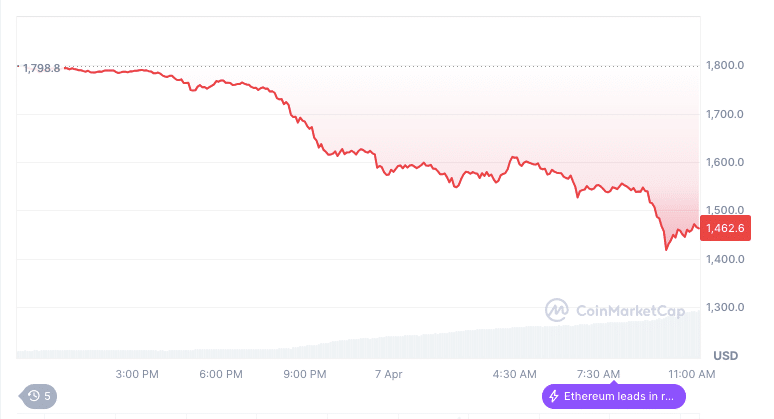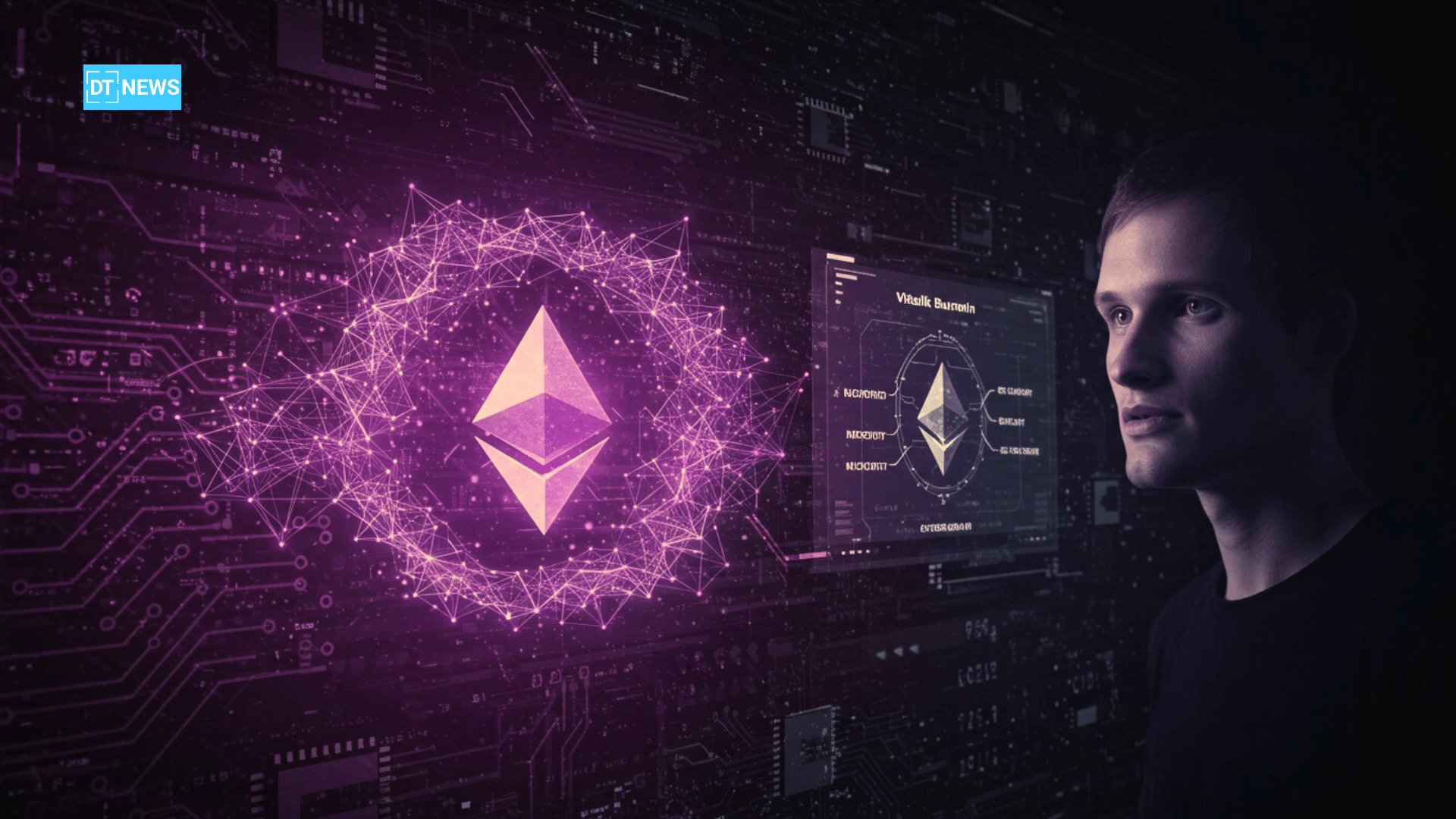Ethereum is moving closer to achieving instant transaction finality as Vitalik Buterin proposes a new Layer-2 rollup security framework. The plan integrates three separate validation mechanisms to reduce dependency on any single system and enhance trustlessness. As Ethereum’s price drops nearly 19%, this proposal aims to reinforce confidence in its scaling future.
- Trustless Finality through Hybrid Proof Architecture
- Pectra and Fusaka Set to Scale Ethereum
- Security Council Oversight and Future of TEEs
- Ethereum Market Update and Roadmap Impact
- FAQs
- What is the goal of Vitalik Buterin’s new framework?
- How does the three-prover model work?
- What upgrades will support this framework?
- What happens if the provers disagree?
- Can TEEs be removed in the future?
- Glossary
- Reference:
Trustless Finality through Hybrid Proof Architecture
Vitalik Buterin introduced a new rollup validation framework that combines zero-knowledge proofs, optimistic rollups, and trusted execution environments. This three-prover model ensures that two mechanisms agree to finalize the rollup’s state root. If two validate the result, finality is immediate; otherwise, the system activates a fallback optimistic mode.
This hybrid approach avoids full reliance on any single proof mechanism while strengthening Ethereum’s commitment to decentralization and security. When a ZK prover and a TEE agree, finality is instant and without dispute. If only one mechanism validates the state, the system returns to a seven-day challenge window.
Buterin stated that the optimistic model will act as the final arbiter when a disagreement arises among the provers. This ensures that semi-trusted systems do not override more secure-proof types. Therefore, it balances fast execution with trust-minimized validation, especially during technical disagreements.
Pectra and Fusaka Set to Scale Ethereum
Upcoming Ethereum upgrades, including Pectra and Fusaka, will expand the data layer for Layer-2 networks. The Pectra update will raise blob space per block to six, while Fusaka may increase it to 72. These improvements will ease congestion and make roll-up transactions more affordable and efficient.

Buterin highlighted the importance of establishing a standardized proof aggregation layer across the Ethereum ecosystem. This mechanism would enable applications to combine proofs into a single submission, minimizing gas usage per app. Without aggregation, separate proof submissions would each require around 500,000 gas, driving up costs.
This aggregation would benefit privacy tools, rollups, and smart contract wallets by lowering gas fees and improving scalability. Developers expect ZK-EVMs to produce complete proofs as proof systems evolve within a single slot. Ethereum may soon handle vast data loads without delays or bloated fees.
Security Council Oversight and Future of TEEs
To ensure system resilience, Buterin proposed a security council with authority to manage unexpected issues across the three-prover setup. The council can rapidly update TEE logic if a failure occurs and apply delayed changes to ZK and optimistic components. This oversight protects the system without undermining its decentralization goals.
In exceptional cases where all provers generate conflicting results, the council will have immediate power to intervene and stabilize the network. However, this will occur only under strict, rare conditions to preserve decentralization. The council acts as a last-resort safeguard against bugs or malicious behavior.
Buterin also suggested that trusted execution environments may eventually be phased out as ZK and OP systems become more robust. Once provers prove stable and efficient, TEEs will no longer be needed to reach trustless finality. Ethereum rollups rely solely on cryptographic assurance and fast proof generation in that scenario.
Ethereum Market Update and Roadmap Impact
At present, Ethereum trades at $1,464.53, reflecting an 18.61% drop over the last 24 hours. The market cap currently stands at $176.7 billion, with a trading volume exceeding $35.6 billion. This decline makes it urgent to improve trust, speed, and scalability across the Ethereum network.

ETH/USD 24-hour price chart source: CoinMarketCap
Buterin’s roadmap clearly responds to critics concerned about Ethereum’s finality speed and rollup trust levels. By using a three-prover design, Ethereum can maintain high throughput while preventing centralization risks. This approach addresses vulnerabilities in current ZK systems while supporting a secure and efficient future.
With critical upgrades like Pectra and Fusaka approaching, Ethereum aims to deliver meaningful improvements to Layer-2 infrastructure. These changes could lower transaction fees and increase user confidence amid price volatility. As Ethereum strengthens its technical foundation, the long-term outlook remains focused on full trustlessness and instant finality.
FAQs
What is the goal of Vitalik Buterin’s new framework?
The goal is to achieve instant finality for Layer-2 rollups using a secure, multi-prover model combining ZK, OP, and TEE systems.
How does the three-prover model work?
The model finalizes a rollup if two of the three provers agree. If only one agrees, the system uses a fallback challenge period.
What upgrades will support this framework?
Ethereum’s upcoming Pectra and Fusaka upgrades will increase blob space, making rollup data processing faster and cheaper.
What happens if the provers disagree?
If provers return conflicting results, the security council can intervene immediately to protect the network and restore consensus.
Can TEEs be removed in the future?
Yes, if ZK and OP systems become stable, Ethereum could remove TEEs and rely only on cryptographic-proof systems.
Glossary
ZK Proof (Zero-Knowledge Proof): A cryptographic method proving a transaction’s validity without revealing its details.
Optimistic Rollup: A Layer-2 solution that assumes transactions are valid unless challenged within a set time window.
TEE (Trusted Execution Environment): A secure area of a processor that runs code in isolation to protect data integrity.
Blob: A chunk of data space used in Ethereum blocks, crucial for storing rollup-related information efficiently.
Proof Aggregation: The process of combining multiple cryptographic proofs into one, reducing overall gas costs.



















































































































